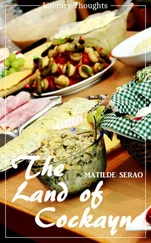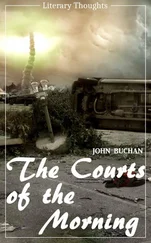These salient characteristics of the Jat, combined with other qualities cultivated by British rule and example, have tinctured practically the whole Sikh race.
Respect of self and pride of race have now improved from the Sikh character the early intolerance and ungovernable spirit emanating from the Jats. Even the Sikh religion, as taught by its founder Nanak, has modified the hard-and-fast prejudices of the Hindu on the one hand, and on the other has eliminated the baser rancour and fanaticism of the more exoteric Mahomedanism.
The Sikh of to-day is a level-headed, sober-minded, tolerant man, keenly alive to practical issues. And from this may be judged his valour as a soldier. In the thick of battle the Sikh is cool and resolute. He is possessed of grim determination and tenacity. Just as in any emergency of social life he will keep his head with admirable self-restraint, so in the clash of battle he can be relied upon to do the right thing at the right moment in the right way. While not possessing quite so much élan as some other tribes, he more than compensates for that lack by his immunity from any tendency to panic.
The high-class Sikh may always be known by his stately bearing and lofty courtesy. His every movement is graceful, and the general impression one would get on the approach of a real Sikh is simply this: "Here comes one who is a prince in his own country." This dignity of bearing extends even to the lower classes, especially among our Sepoys, who carry themselves with an easy elegance, much of which is attributable to their splendid physique and the due consciousness of it.
It is not too much to say that of all the fine races of the East there is no type of man superior to the Sikh. In innate breeding he can tread the razor-edge between independence and insolence, between firm resolution and unreasoning obstinacy, between the present value of tradition and the dead husk of the glorified past. In his respect of himself he commands respect from others, and, combining the essential instinct of the soldier with the acquired love of practical ideals he can see with a single eye what the doubleheaded vulture of Prussia cannot see with four.
Constant fighting and an iron discipline had kept the Sikhs in order during the lifetime of Ranjit Singh, but after his death the army became unmanageable.
The history of the Sikh War is too well known to need more than passing reference. The troops of the Khalsa were defeated after a series of hard-fought battles, in which they showed soldierly qualities of the highest order. In the decade which followed the conquest of the Punjab, the British Government, impressed with the fighting capacity of their former opponents, determined to employ them as soldiers in their own army.
On the outbreak of the Mutiny, which from the first was identified with the restoration of the Moghul power, there was an immense revival of Sikhism. Hundreds of Sikhs who had turned their swords into ploughshares flocked to Lahore, and eagerly took service in the regiments there being raised by Lord Lawrence. All were filled with an intense longing to range themselves on the side of justice and right. All were anxious to assist in the capture of Delhi—a city associated in their minds with the heroic struggles and reverses of their forefathers. The spirit of the Khalsa, which had suffered greatly by the defeats on the Sutlej, was aroused at the thought of a conflict between Sikhism and Islam—a conflict the memory of which is now not only nobly forgotten, but to be blotted out for ever by heroism and sacrifice; for both Sikh and Mahomedan of India have joined hands in common cause against the enemy of all human progress. Both have espoused our cause with a devotion and loyalty which is almost without parallel in history.
THE SIKH REGIMENTS, WITH THEIR BATTLE HONOURS
Cavalry
The following regiments contain squadrons of Sikhs:—
2nd Lancers (Gardner's Horse).
3rd Skinner's Horse.
4th Cavalry.
6th King Edward's Own Cavalry.
7th Hariana Lancers.
9th Hodson's Horse.
10th Duke of Cambridge's Own Lancers (Hodson's Horse).
11th King Edward's Own Lancers (Probyn's Horse).
12th Cavalry.
13th Duke of Connaught's Lancers.
16th Cavalry.
18th King George's Own Lancers.
19th Lancers (Fane's Horse).
20th Deccan Horse.
21st Prince Albert Victor's Own Cavalry (Frontier Force) (Daly's Horse).
22nd Sam Browne's Cavalry (Frontier Force).
23rd Cavalry (Frontier Force).
25th Cavalry (Frontier Force).
29th Lancers (Deccan Horse).
30th Lancers (Gordon's Horse).
31st Duke of Connaught's Own Lancers.
32nd Lancers.
33rd Queen Victoria's Own Light Cavalry.
36th Jacob's Horse.
37th Lancers (Baluch Horse).
38th King George's Own Central India Horse.
39th King George's Own Central India Horse.
Infantry
The following regiments are composed exclusively of Sikhs:—
14th King George's Own Ferozepore Sikhs. Raised July 30th, 1846.
Consists of 8 companies of Sikhs.
Badges.—The Plume of the Prince of Wales. The Royal and Imperial Cypher.
Battle Honours.—"Lucknow," "Ali Masjid," "Afghanistan 1878/79," "Defence of Chitral," "China 1900."
Uniform.—Scarlet, facings yellow.
15th Ludhiana Sikhs. Raised 1846.
Consists of 8 companies of Sikhs.
Battle Honours.—"China 1860/62," "Ahmad Khel," "Kandahar 1880," "Afghanistan 1878/80," "Suakim 1885," "Tofrek," "Chitral," "Punjab Frontier," "Tirah."
Uniform.—Scarlet, facings emerald green.
23rd Sikh Pioneers. Raised 1857.
Consists of 8 companies of Mazhbi Sikhs.
Battle Honours.—"Taku Forts," "Pekin," "Abyssinia," "Peiwar Kotal," "Charasiah," "Kabul 1879," "Kandahar 1880," "Afghanistan 1878/80," "Chitral."
Uniform.—Drab, facings chocolate.
32nd Sikh Pioneers. Raised 1857.
Consists of 8 companies of Mazhbi Sikhs.
Motto.—"Aut viam inveniam aut faciam."
Battle Honours.—"Delhi," "Lucknow," "Afghanistan 1878/80," "Chitral."
Uniform.—Scarlet, facings blue.
34th Sikh Pioneers. Raised 1887.
Consists of 8 companies of Mazhbi Sikhs.
Battle Honours.—"Chitral," "Punjab Frontier," "China 1900."
Uniform.—Scarlet, facings blue.
35th Sikhs. Raised 1798, disbanded 1882, reformed 1887.
Consists of 8 companies of Sikhs.
Battle Honours.—"Punjab Frontier," "Malakand."
Uniform.—Scarlet, facings yellow.
36th Sikhs. Raised 1858, disbanded 1882, reformed 1887.
Consists of 8 companies of Sikhs.
Battle Honours.—"Punjab Frontier," "Samara," "Tirah."
Uniform.—Scarlet, facings yellow.
47th Sikhs. Raised 1901.
Consists of 8 companies of Sikhs.
Uniform.—Scarlet, facings yellow.
The 48th Pioneers, 51st Sikhs (Frontier Force), 52nd Sikhs (Frontier Force), 53rd Sikhs (Frontier Force), and 54th Sikhs (Frontier Force) are Sikh regiments with other tribes intermixed.
The chief characteristic of the Rajput is his pride of blood. Representing as he does the higher military castes of India, his one ambition has always been to wield a sword, and wield it well. For ages in the past the Rajput maintained his supremacy in one or another part of India. Claiming descent from the sun and the moon, and later from those two heroes of the Mahabharata—Rama and Krishna—the Rajput maintains that his ancient and noble blood has flowed in the veins of kings from times more remote than any other history can record. That old but immortal legend of the Bhagavad Gîta, in which Prince Arjuna held a discourse with Krishna, the supreme Deity, in his war-chariot, drawn up between the opposing forces of Kauravas and Pandavas, is regarded by the Rajput as peculiarly his own. It is not to be wondered at, then, that, possessing from time immemorial this lofty poem, so sublime in its aspiration, so pure and tender in its piety, the Rajput has always been a man of high and noble sentiment and lofty ideals. He is, as the literal rendering of his name implies, the "Rajah's son," and in war has always displayed most noble and fearless qualities.
Читать дальше












